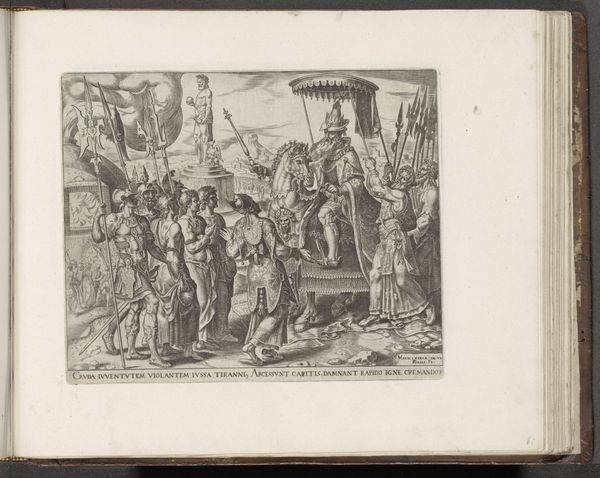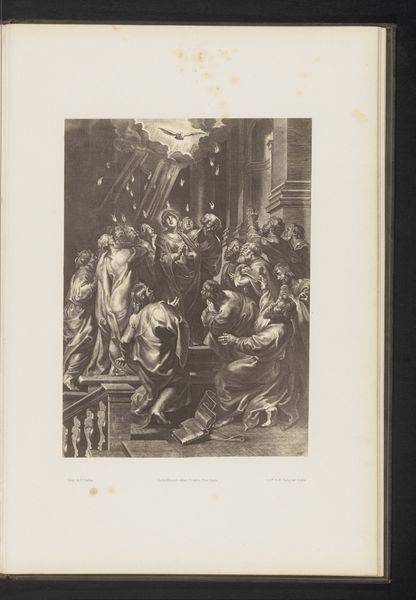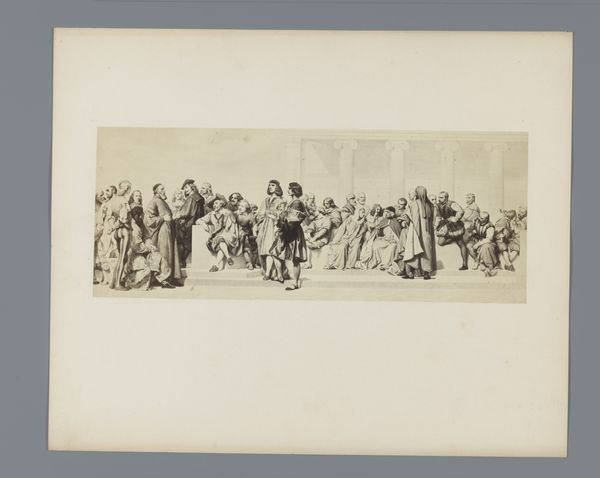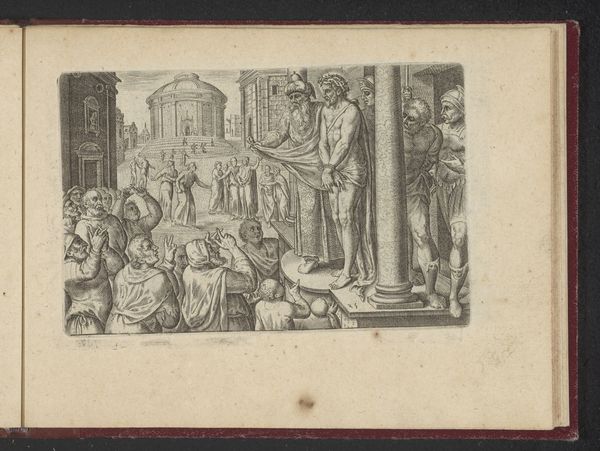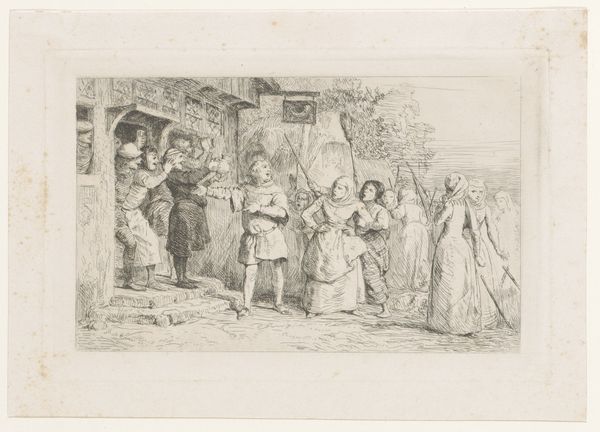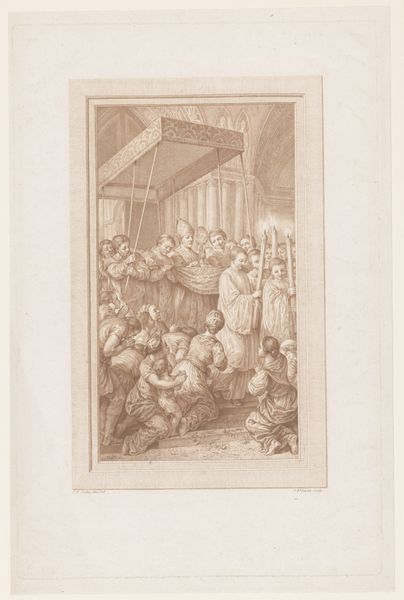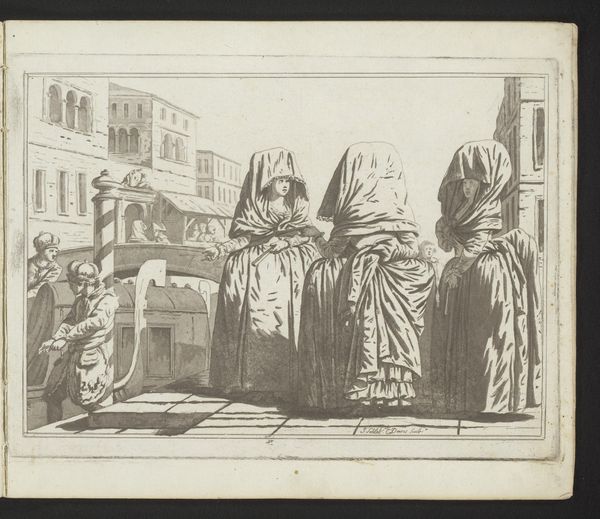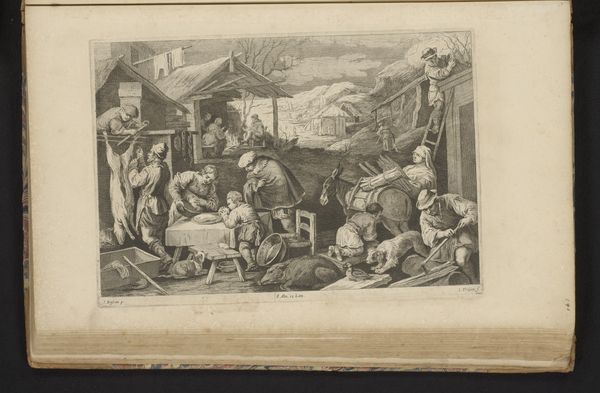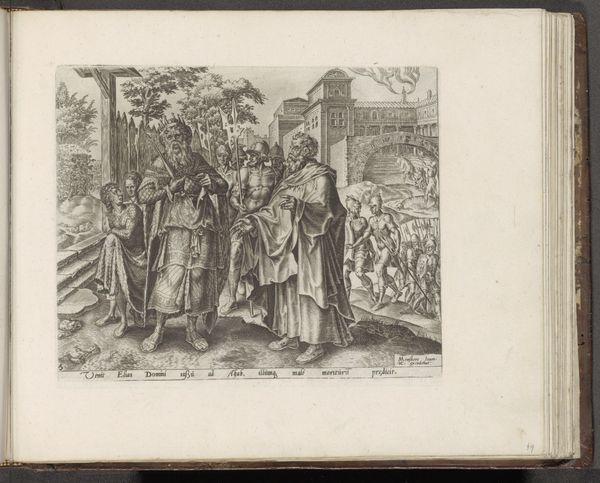
drawing, pen
#
drawing
#
medieval
#
narrative-art
#
pen drawing
#
pen illustration
#
pen
#
genre-painting
#
history-painting
#
academic-art
Dimensions: height 272 mm, width 192 mm
Copyright: Rijks Museum: Open Domain
Editor: So, we have "Sounds of the Host for a Building," a pen drawing by Louis Ducros, created sometime between 1758 and 1810, housed here at the Rijksmuseum. It’s a bustling scene, all rendered in incredibly precise lines, giving a sense of ordered piety. What catches your eye when you look at it? Curator: Well, I'm drawn to the very labor involved in creating such detail with a pen. Look at the sheer number of lines, the time involved. It makes you think about Ducros’s workshop, his process, and the social context of artistic production back then. Were these drawings made for a wealthy patron or a broader market? What sort of labor was involved for him to create it, and for others to circulate and eventually archive it, too? Editor: That's fascinating, I hadn't considered the physical act of drawing. I was more focused on the narrative, this sort of grand procession, maybe even the relationship between church and community in the drawing. Curator: But isn’t the procession *itself* a form of material expression? Consider the fabrics of the religious garments, the weight of the banner, even the structure they walk towards. It is through materials such as that religious garb and items used in religious activity that religious dominance is expressed and understood. Everything is manufactured for a reason, everything signals something that has been specifically requested of the artist. These weren’t readily available. They represent power and religious zeal, created through immense resources being given to the religious organizations in question. What social statement, then, does the artist render and commit to archiving via committing them to paper via art production, whether intentionally or otherwise? Editor: So you're suggesting the *materials* depicted, and the material act of creating this work, offer an insight into the social context? Curator: Exactly. It invites us to consider labor, consumption, and the visual rhetoric of power in 18th-century society. The medium *is* the message and the society! Editor: That's a really interesting lens through which to view this work. Thanks! I'm now seeing things with a new appreciation for the time and socio-political conditions behind even these fine details. Curator: Absolutely, viewing art as a product of material and labor opens up richer layers of understanding.
Comments
No comments
Be the first to comment and join the conversation on the ultimate creative platform.

